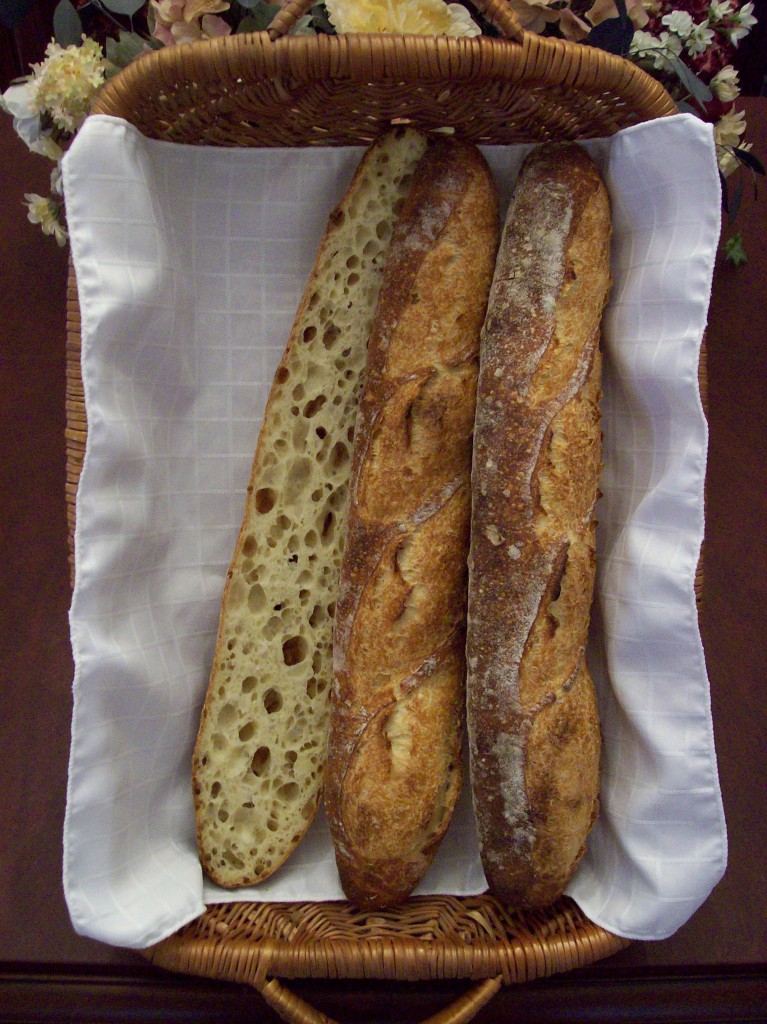
When I first started learning how to bake bread a few years ago, my goal then, as it is to this day, was to be able to bake breads with superior flavor, texture and aesthetics. �Most of the bread books I’d read at the time, as well as most of the professional bakers with whom I’d spoken, had emphasized the use of a preferment, whether it be a p��te ferment��e, poolish or levain, to bring out the maximum flavor of the bread. �Somewhere lost in the conversation was the fact that the use of preferments evolved as more of a time-saving and scheduling convenience for commercial bread production (see comment by Judson below) and that their use was not, in fact, a necessity for the production of a full-flavored bread. �The use of direct dough methods, containing a long, slow fermentation step, could also produce incredibly flavorful breads.
Continue Reading »
Tags: baguettes, Bouabsa, double hydration, folding, high hydration, levain
Posted in Lean Doughs, Techniques | 141 Comments »
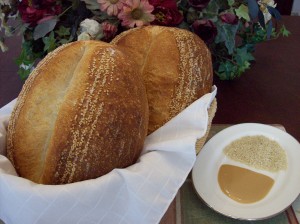
If you’ve ever had the pleasure of sampling a piece of halvah, that sweet, dense and crumbly sesame seed-based confection, then you’ll understand why I’ve been enamored of sesame flavor since childhood. �Sesame seeds and bread are a classic combination. �Whether sprinkled on top of a loaf, as in the quintessential sesame bread Scali, or incorporated into the bread along with other seeds, nuts and/or grains as part of a multigrain loaf, sesame seeds add a unique, rich flavor that perfectly complements the inherently nutty character of a well-fermented wheat dough.
Continue Reading »
Tags: fendu, levain, sesame, sourdough, tahini
Posted in Lean Doughs | 41 Comments »

Having made the commitment at the beginning of this year to eat only foods that are fresh, unprocessed and nutritious, I know what it feels like to give up foods that one has become accustomed to and has enjoyed over the years. It was therefore with a great sense of empathy that I learned that H��lo��se, the 10� year old daughter of my good friend Flo (author of the wonderful food blog Makanai), was recently instructed by her physician that she needs to exclude all dairy products from her diet. A French young lady who can no longer eat ice cream, butter or cheese? Quelle horreur! And that’s not to mention the prohibition on all the butter-enriched sweet breads and pastries for which the French have become famous. This is a situation which must be rectified!
Continue Reading »
Tags: agave, coconut milk, coconut oil, non-dairy
Posted in Rich Doughs | 29 Comments »
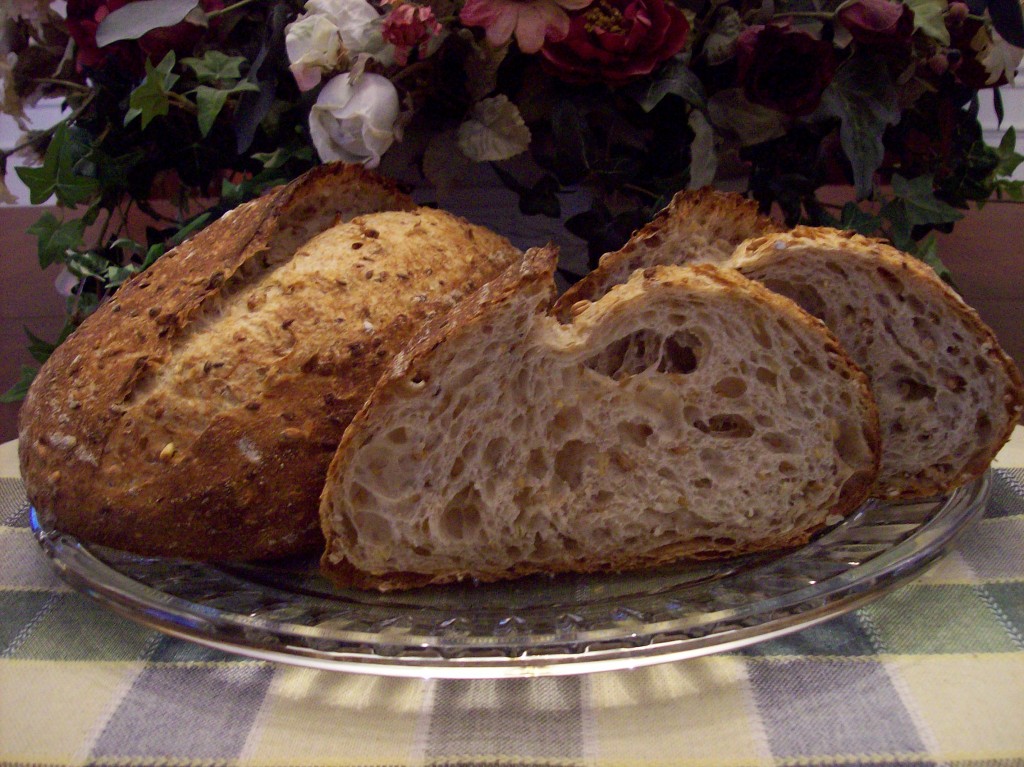
Alright everyone. �Get out your monogrammed stationery and Cross pen. �This is a bread that you simply must write home about.
Up until this point, I’ve not been a real big fan of multigrain bread. �Perhaps it’s because I’ve never had the pleasure of sampling a really well-made multigrain loaf. �To me, multigrain bread has always conjured up images of heavy, dry and tasteless planks of corrugated cardboard. �But with my New Year’s resolution of trying to eat foods that are better for me (no, I won’t totally be giving up the occasional croissant or slice of brioche but I am trying to eat less and include only natural, additive-free foods in my diet), I decided to revisit the world of whole grains.
Continue Reading »
Tags: flaxseeds, levain, multigrain, oats, sunflower seeds, whole wheat
Posted in Lean Doughs | 83 Comments »
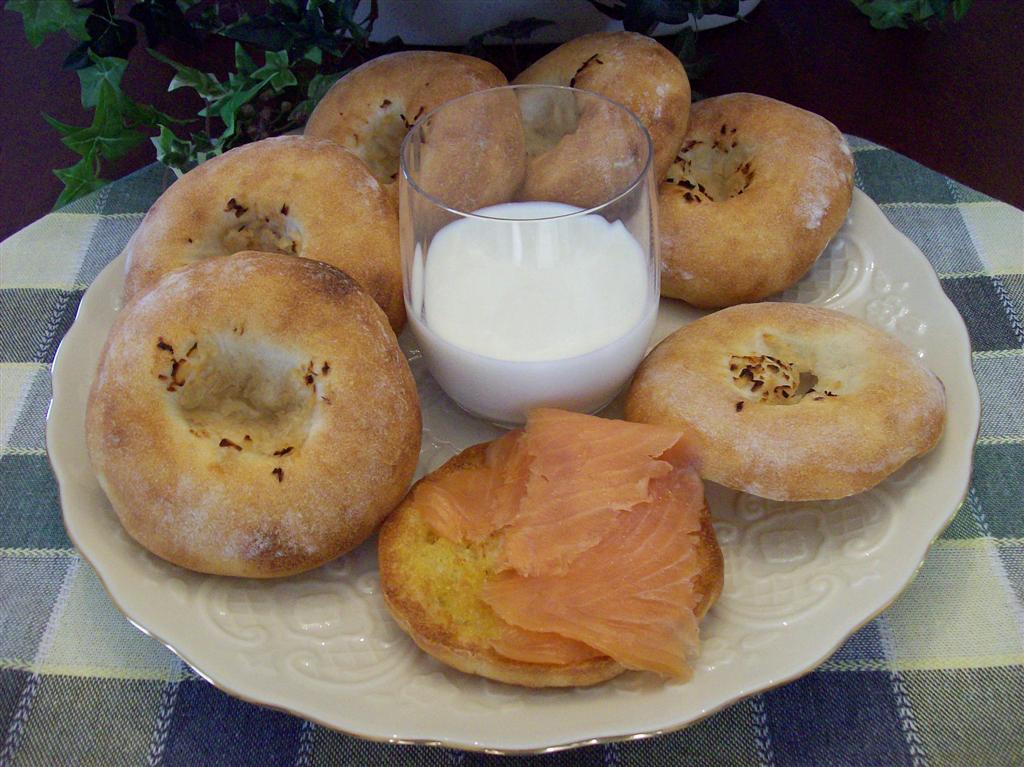
If there was�one bread that could�legitimately lay claim to being the bagel’s ‘heir apparent’,�it would have to be the bialy.� A lesser-known cousin to the bagel, the bialy is named�after�Bialystok, the city in Poland from which it originates.� Like the bagel, the bialy has a characteristic�chewy, toothsome crumb.� However,�that is where the similarity ends.� Unlike the bagel’s shiny, deep�brown crust, the bialy’s crust is soft and�floury.� And instead of a hole through the center, the bialy sports�a central indentation where a small amount�of chopped onion resides,�giving the bialy its signature flavor.
Continue Reading »
Tags: bialy
Posted in Lean Doughs | 46 Comments »
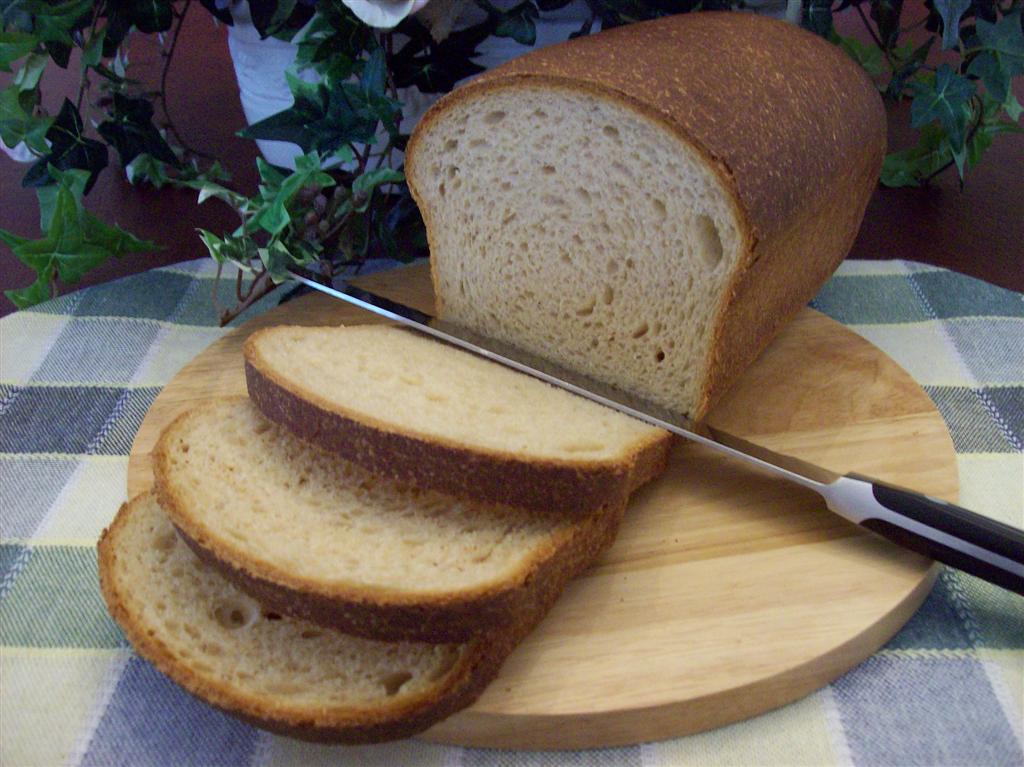
As a child, I, like many other Americans, had been conditioned (unintentionally, I’m sure… no conspiracy theory here!)�to think of bread as merely an adjunct; a pasty white, flavorless�platform for slices of lunch meat, peanut butter or any�other filling that happened to find its way into�my school lunch sandwich.� But sandwich bread�doesn’t have to be dull and uninspired.� With a little imagination, even simple sandwich bread can take center stage, providing both�a satisfying, deep wheaty flavor�and needed nutrition.
Continue Reading »
Tags: sandwich bread, white whole wheat
Posted in Rich Doughs | 69 Comments »

With the arrival of spring here in New England (although with evening temperatures still below freezing, one would be hard-pressed to find evidence of�spring’s return), gastronomic thoughts�turn�from the rich,�substantial ‘comfort foods’ of winter to lighter, more refreshing�fare.� But what of those of us who would like to continue to enjoy some of the hearty flavors of winter throughout the year?� Potato leek bread perfectly sates this desire.��Suffused with the flavors of a rich potato leek soup, the deep, earthy aroma of freshly roasted potatoes and�the slightly vegetal accent provided by the leeks combine to give a bread that would be ideally�suited�as an accompaniment to a salad or light broth.
Continue Reading »
Tags: fendu, leek, potato
Posted in Lean Doughs | 26 Comments »
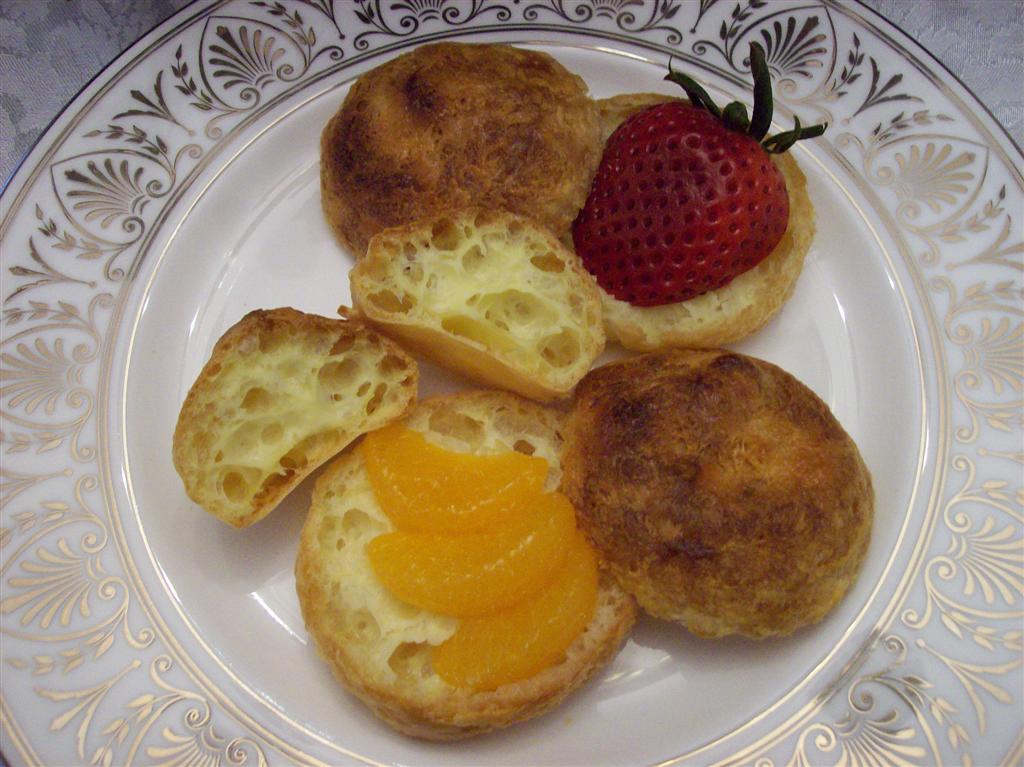
I think it was in a Szechuan Chinese restaurant where the list�first began.� After a bite of a particularly spicy�serving of mapo doufu (spicy bean curd), I grabbed my glass of water, downed about half of its contents and, after reducing�the fire on my tongue to a mere smolder, turned to my wife and remarked, “Water has to be one of the world’s greatest inventions!”.� Thus, my list of the World’s Greatest Inventions was born.
Now before I get�comments pouring in, pointing out that�water isn’t strictly an ‘invention’, I ask that you bear with me and allow me the latitude to use the word ‘invention’ in the broadest possible sense.��Why the requested forbearance?� Because my list of�the World’s Greatest Inventions includes inventions, discoveries, natural resources… well, you get the picture.� And what does all this have to do with goug��res?� �Goug��res�happen to be�made with two ingredients that are on my�World’s Greatest Inventions list; water, #2�on my list�and cheese, #4�(anyone care to guess what #1 and #3 are?).
Continue Reading »
Tags: goug��res, gruy��re, p��te �� choux
Posted in Rich Doughs | 26 Comments »

Like most�major U.S. cities, my home town, Boston, is a wonderful m��lange of people from many�different�ethnic and cultural backgrounds.� Boston’s North End,�rich in�colonial�history,�is today home to a vibrant Italian-American community.��One of my favorite activities has always been to�stroll along�the narrow streets of the North End�enjoying the commotion (I did, after all, spend my childhood years�in�Brooklyn, New York)�while, along the way, sampling the fare at a few of�the�many Italian eateries, specialty food stores and, of course, bakeries.
Continue Reading »
Tags: braid, scali, sesame
Posted in Rich Doughs, Techniques | 33 Comments »
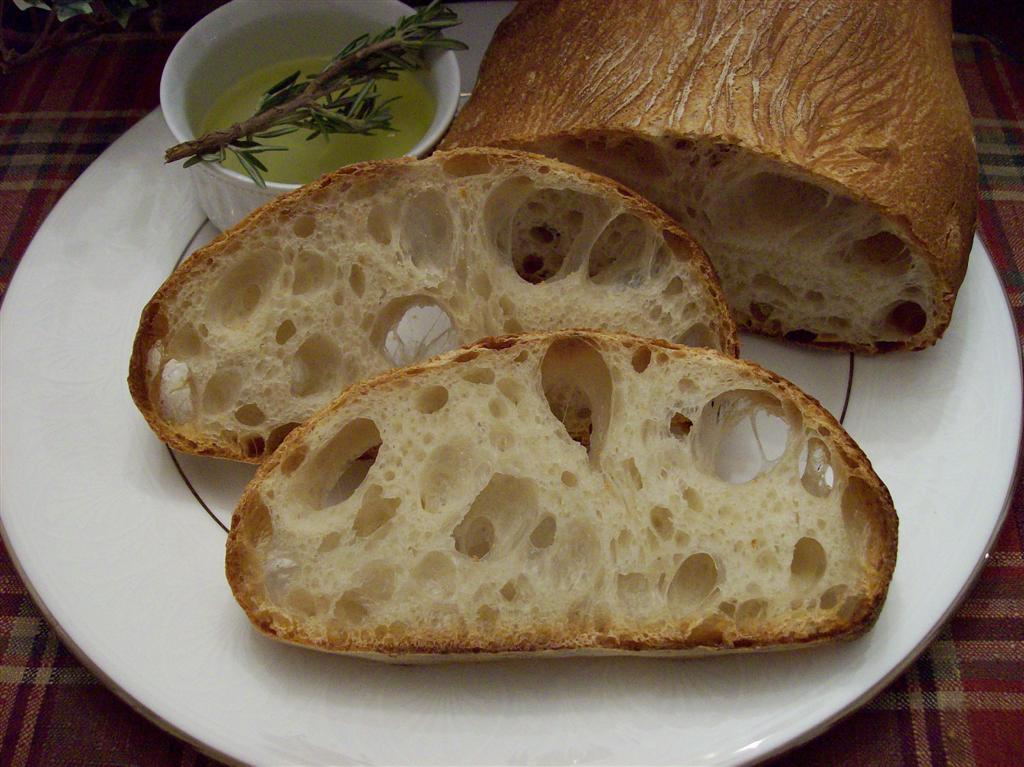
In the previous post (More Musings on Mixing… ), I described a newly devised ‘double flour addition’ dough mixing technique which�will allow a home baker, using a conventional tabletop stand mixer, to produce a well developed, nicely aerated dough nearly identical to those produced by professional bakers using commercial mixing equipment.� While it was demonstrated that one could use the double flour addition technique to produce�a pain au levain with the desired open crumb,�there was still a question�about the�versatility of the�technique.� Could double flour addition be used to produce�the type of�high hydration dough used to create the wide open crumb structure characteristic of a ciabatta?
Continue Reading »
Tags: ciabatta, mixing
Posted in Lean Doughs, Techniques | 154 Comments »









